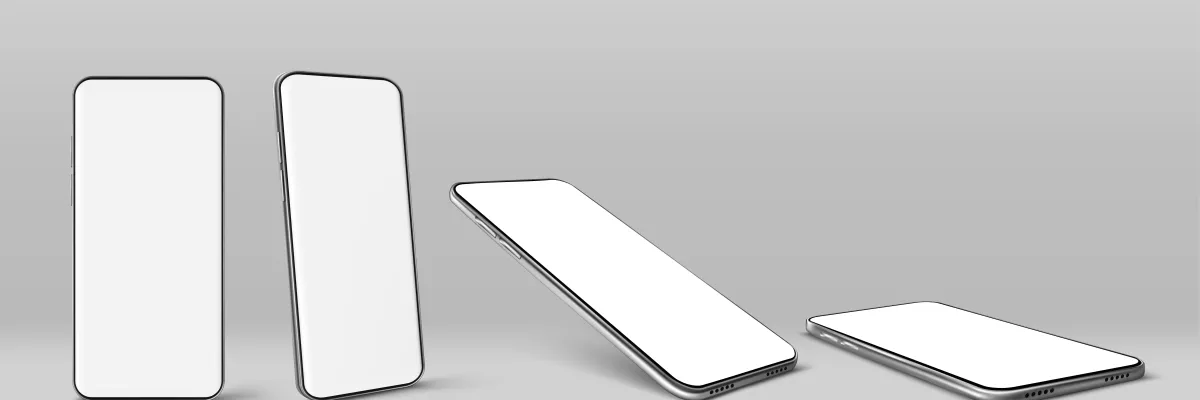
Mobile Display
Mobile displays refer to the screens found on smartphones and other mobile devices. These displays are essential for interacting with the device and viewing information, images, and videos.
There are two main types of mobile displays: OLED (organic light-emitting diode) and LCD (liquid crystal display). OLED displays offer better contrast, and deep blacks, and are more power-efficient, but they are also more expensive. LCD displays are more affordable, but they offer lower contrast and require backlighting, which can consume more power.
Mobile displays also have different sizes and resolutions, which impact the viewing experience. Some smartphones have large displays, such as the Samsung Galaxy Note series, while others have more compact displays, such as the iPhone SE.
Other features that can impact mobile display performance include refresh rates, which can affect the smoothness of animations, and color accuracy, which can impact the display's ability to accurately reproduce colors.
Top 10 mobile displays of the year
As a language model, I don't have the ability to browse the internet and gather real-time information on the latest mobile displays. However, I can provide you with a list of some of the best mobile displays of the past year based on their technical specifications and user reviews.
iPhone 12 Pro Max -
This smartphone features a 6.7-inch Super Retina XDR OLED display with a resolution of 2778x1284 pixels. It offers excellent contrast, color accuracy, and brightness levels.
OnePlus 9 Pro -
This smartphone features a 6.7-inch Fluid AMOLED display with a resolution of 3216x1440 pixels and a refresh rate of 120Hz.
Google Pixel 5 -
This smartphone features a 6-inch OLED display with a resolution of 2340x1080 pixels.
Sony Xperia 1 III -
This smartphone features a 6.5-inch OLED display with a resolution of 3840x1644 pixels and a refresh rate of 120Hz.
Samsung Galaxy Note 20 Ultra -
This smartphone features a 6.9-inch Dynamic AMOLED 2X display with a resolution of 3088x1440 pixels and a refresh rate of 120Hz.
Xiaomi Mi 11 Ultra -
This smartphone features a 6.81-inch AMOLED display with a resolution of 3200x1440 pixels and a refresh rate of 120Hz.
Asus ROG Phone 5 -
This smartphone features a 6.78-inch AMOLED display with a resolution of 2448x1080 pixels and a refresh rate of 144Hz.
LG Wing -
This smartphone features a 6.8-inch P-OLED display with a resolution of 2460x1080 pixels.
Oppo Find X3 Pro -
This smartphone features a 6.7-inch AMOLED display with a resolution of 3216x1440 pixels and a refresh rate of 120Hz.
Note that this list is not exhaustive, and there may be other mobile displays that are equally impressive.
The future of foldable mobile displays
Foldable mobile displays have been around for a few years, but they have not become mainstream due to high costs and durability issues. However, many experts believe that foldable mobile displays have the potential to revolutionize the mobile industry in the coming years.
Here are some potential trends and developments to look out for in the future of foldable mobile displays:
More affordable options:
As with any new technology, foldable mobile displays are expensive to manufacture and purchase. However, as technology matures and competition increases, we can expect to see more affordable options.
Improved durability:
One of the biggest challenges with foldable mobile displays is ensuring their durability. Manufacturers are working on improving the strength of the displays and reducing the likelihood of damage from repeated folding and unfolding.
New form factors:
Foldable mobile displays offer a unique opportunity to explore new form factors for mobile devices. For example, we may see devices that can be folded into a smaller form factor for portability or unfolded into a larger display for more immersive content consumption.
More versatile multitasking:
Foldable mobile displays can also enable more versatile multitasking, as users can split the screen into multiple windows for different apps. This can be especially useful for professionals who need to work on multiple applications simultaneously.
Integration with other technologies:
Foldable mobile displays could be integrated with other technologies such as flexible batteries, flexible circuits, and even haptic feedback to enhance the user experience further.
Overall, foldable mobile displays represent an exciting and innovative direction for the mobile industry, and we can expect to see significant advancements in this area in the coming years.
Conclusion
In conclusion, mobile displays are a crucial aspect of mobile devices, providing users with the ability to interact with their devices and view content. The two main types of mobile displays are OLED and LCD, each with its own advantages and disadvantages. The size, resolution, refresh rate, and color accuracy of mobile displays can significantly impact the user experience.
Looking toward the future, foldable mobile displays offer exciting opportunities for innovation in the mobile industry. While there are current challenges with cost and durability, advancements in technology and competition will likely result in more affordable and durable foldable mobile displays. These displays have the potential to enable new form factors and versatile multitasking, enhancing the overall user experience.
